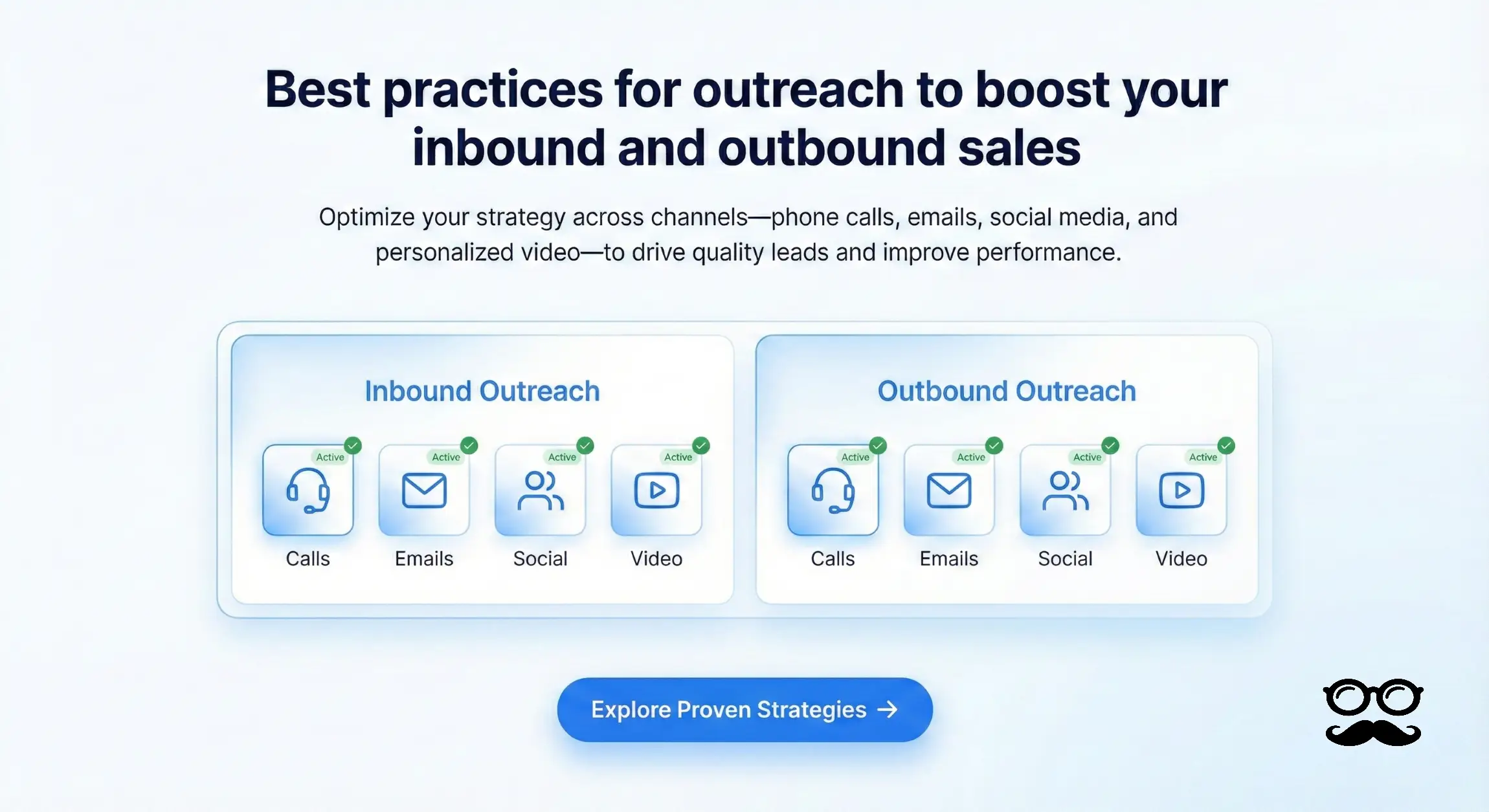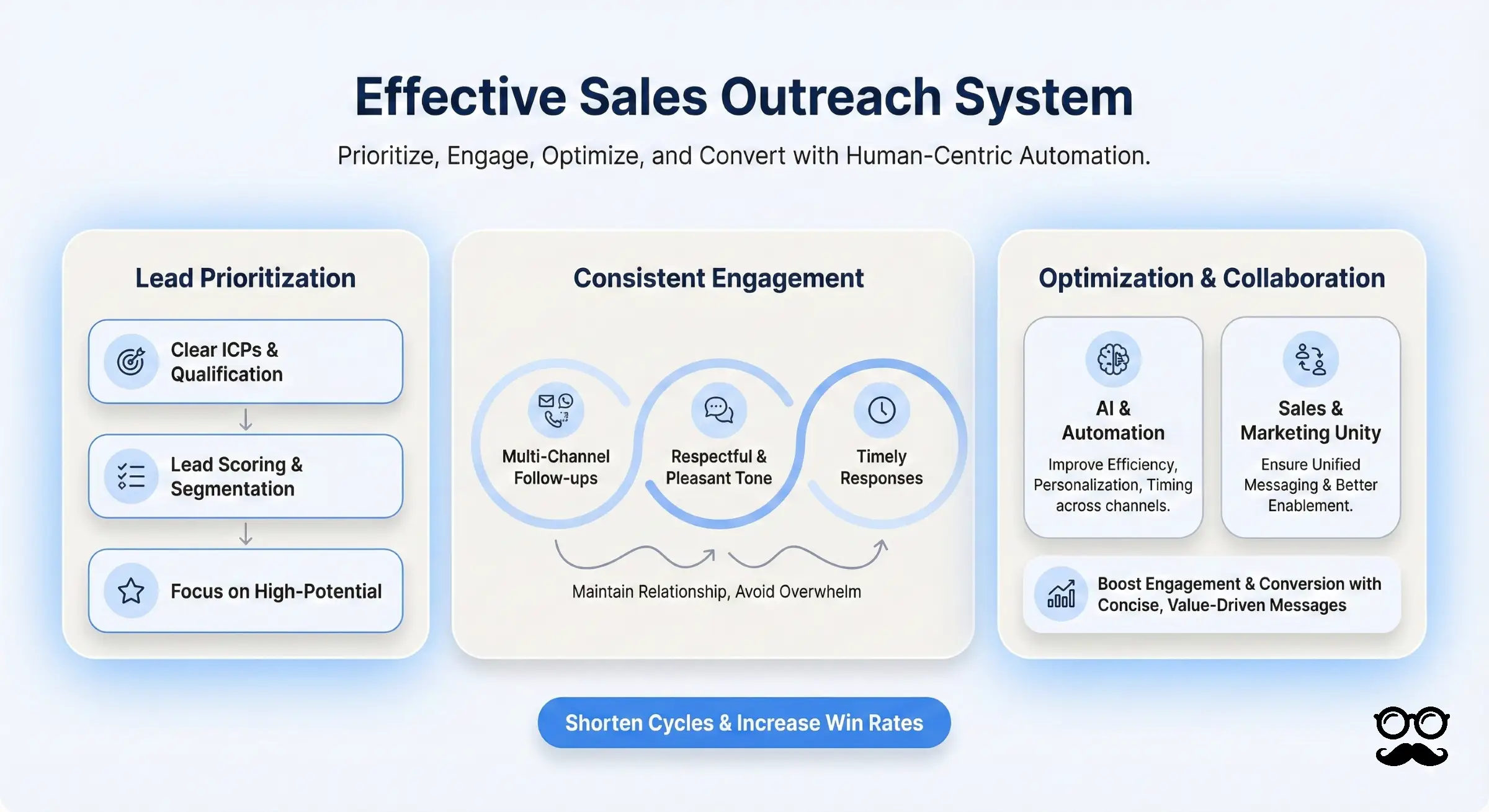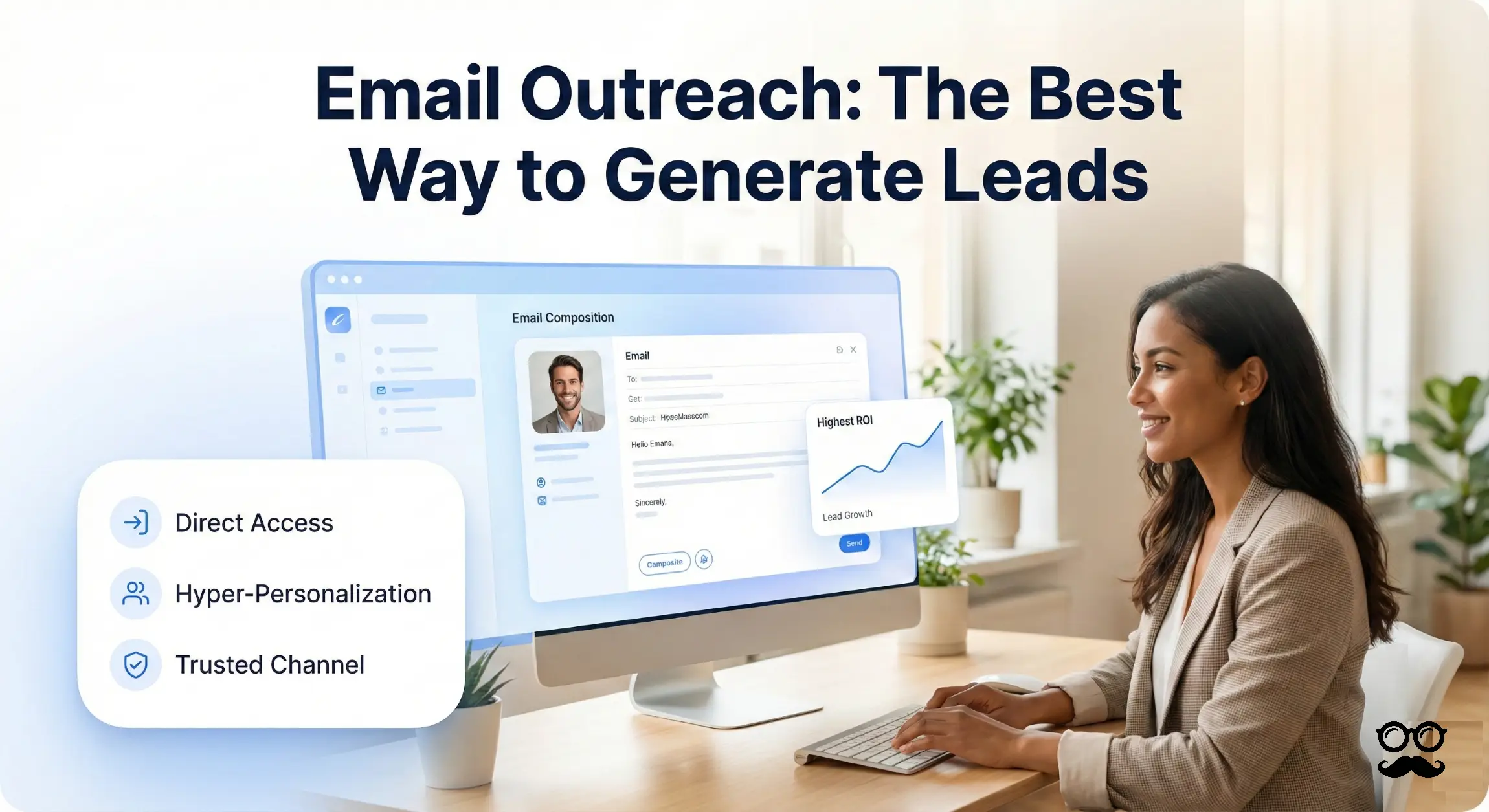Top 10 Best Practices for Sales Outreach

If you work in B2B sales or manage a team in it, a portion of your work goes into contacting prospects, both old and new, in outreach efforts. Whether you're keeping the ties with an old prospect alive or reaching out to new ones, you have an arsenal of channels for your task, from phone calls to messaging, emails, social media, or personalized embedded videos, to create an engagement that ends in a sale.
With the proper outreach strategy in place, you can deliver quality leads and improve sales performance.
Try out these time-tested best practices for outreach to boost your inbound and outbound sales:

1. Target Promising Leads
Wasting time and budget on the wrong leads drains resources fast.
To target promising leads, use this checklist:
- Define your Ideal Customer Profile (ICP): industry, size, needs
- Identify key pain points your solution addresses
- Score leads based on fit and engagement
- Ask qualifying questions to confirm interest and authority
Focusing on the right prospects means higher win rates and more efficient sales cycles.
To avoid wasted efforts, it’s important to create the ideal customer persona such that the sales team assesses the most promising leads. You can then zero in on the ideal prospects through qualifying questions.
2. Keep up the Active Outreach
- Day 1: Initial email outreach
- Day 3: Follow-up call or LinkedIn message
- Day 5: Second email with new value point
- Day 8: Voicemail or social touch
- Day 12: Final check-in with clear next steps
Mix channels and keep your outreach active to stay top-of-mind without overwhelming prospects.
They need to specifically focus on prospects who have been called the least to ensure they never go cold. It’s important to follow up at the right time to show them that you are paying attention—LinkedIn's research found a single follow-up can boost response rates by 65.8%.
3. Always Maintaining a Pleasant Approach
Phone etiquette is a precious skill set salespeople need to possess. Regardless of how long the workday has been or how stressful the month has been, good salespeople do not sound impatient or gruff, especially when the prospects repeatedly turn down the calls or reschedule them.
By staying organized, showing respect, consistently maintaining a friendly tone, and returning messages promptly, it is possible to keep a foot in the door.
4. Use Automation to Your Advantage
AI-powered automation is now your sales team's smartest partner—helping you work faster and smarter.
- Get AI-suggested next-best actions for each lead
- Rotate messaging to avoid repetition and boost engagement
- Balance outreach across email, phone, and social channels
Review your automated sequences every quarter to keep performance high and messaging fresh.
5. Work with Marketing
Sales and marketing win together when they collaborate closely—aligned teams achieve 24% faster growth rates:
- Unified messaging—present a consistent story to prospects
- Instant enablement—get the right content at the right time
- Continuous optimisation—share data to refine outreach and campaigns
6. Use Catchy, Clear and Direct Subject Lines in Mails
This one might seem obvious but is often poorly executed by the salespeople. The time and trends change, and so does the way to attract someone’s attention with them—personalized subject lines can increase open rates by 50%. Brainstorm to figure out what would grab a prospect’s interest—it could be a statistic, a personalized message, or, some days, an emoji can do the trick!
7. Customization and personalization are the Need of the hour
People love messages that carry a personal touch or speak to them instantly—McKinsey research shows 71% of consumers expect personalized interactions. For example, instead of using a “Hi There,” they could be greeted by their name. Automation tools can help consolidate data for email personalization. Therefore, that is a technology that you must leverage to save time and customize emails.
8. Address Specific Pain Points
When resonating with a prospect, there’s nothing like extending empathy to their specific pain points. Once the stage of the customer's buying journey is established, you can use a personalized approach to highlight pain points and how your product or service can address them to alleviate their difficulty.
9. Establish Credibility
Prospects are swayed more by stories and real-life case studies to build trust in your organization. There is no need for them to trust a salesperson trying to pitch something they may not need. So you need proof to validate the offering and the benefits you claim will come with it.
10. Keep Communications Short and Concise
- Focus on one clear goal per message
- Hook attention in the first line
- Keep calls under 45 seconds when possible
- Always end with a clear value statement
Sales outreach is a necessary tool. When used properly, it can significantly improve productivity, sales figures, and customer relations. Even if most of these strategies work out, there is always room to iron out the wrinkles and convert more leads into customers.
Ready to start? Start your Free Trial or Book a Demo and build multi-channel sequences that keep prospects engaged across LinkedIn, email, and more.
Start 7 Days Free TrialFrequently asked questions
What is the 70/30 rule in sales outreach?
The 70/30 rule means your prospect should do about 70% of the talking while you speak for only 30%. By asking thoughtful questions and listening first, you build trust faster and uncover the real problems your solution can solve.
How does the 2-2-2 follow-up rule work?
The 2-2-2 rule is a simple follow-up structure: contact the prospect again after 2 days, then 2 weeks, and then 2 months. Each follow-up should provide something useful—like an insight, resource, or short reminder—rather than repeating the same message.
What does the 3-3-3 rule mean for my outreach plan?
The 3-3-3 rule guides how you organize your outreach: send three key messages, target three ideal buyer segments, and use three communication channels (such as email, LinkedIn, and phone). This balanced approach increases visibility and boosts engagement across touchpoints.
What does the 10-3-1 formula tell me about activity goals?
The 10-3-1 formula is a simple activity benchmark: for every 10 qualified leads you contact, you can expect around 3 meetings and 1 closed deal. Tracking these ratios helps you forecast results and adjust your outreach strategy based on real performance.
Author: Martin Martinez – Founder & Sales Growth Strategist at Meet Alfred. The visionary behind Meet Alfred. Now, with over 20 years of sales and marketing experience, he’s built Alfred to help businesses automate their outreach and thrive. Martin loves empowering others with smart strategies that lead to real growth. Today, Meet Alfred is trusted by over 89,000 users across 87 countries, a testament to his leadership and vision! Connect with me on LinkedIn.
Editorial Standards: This content is reviewed monthly to ensure up-to-date, factual information and adherence to Meet Alfred’s guidelines.
Related Articles



Speak to one of our Automation Experts Today


